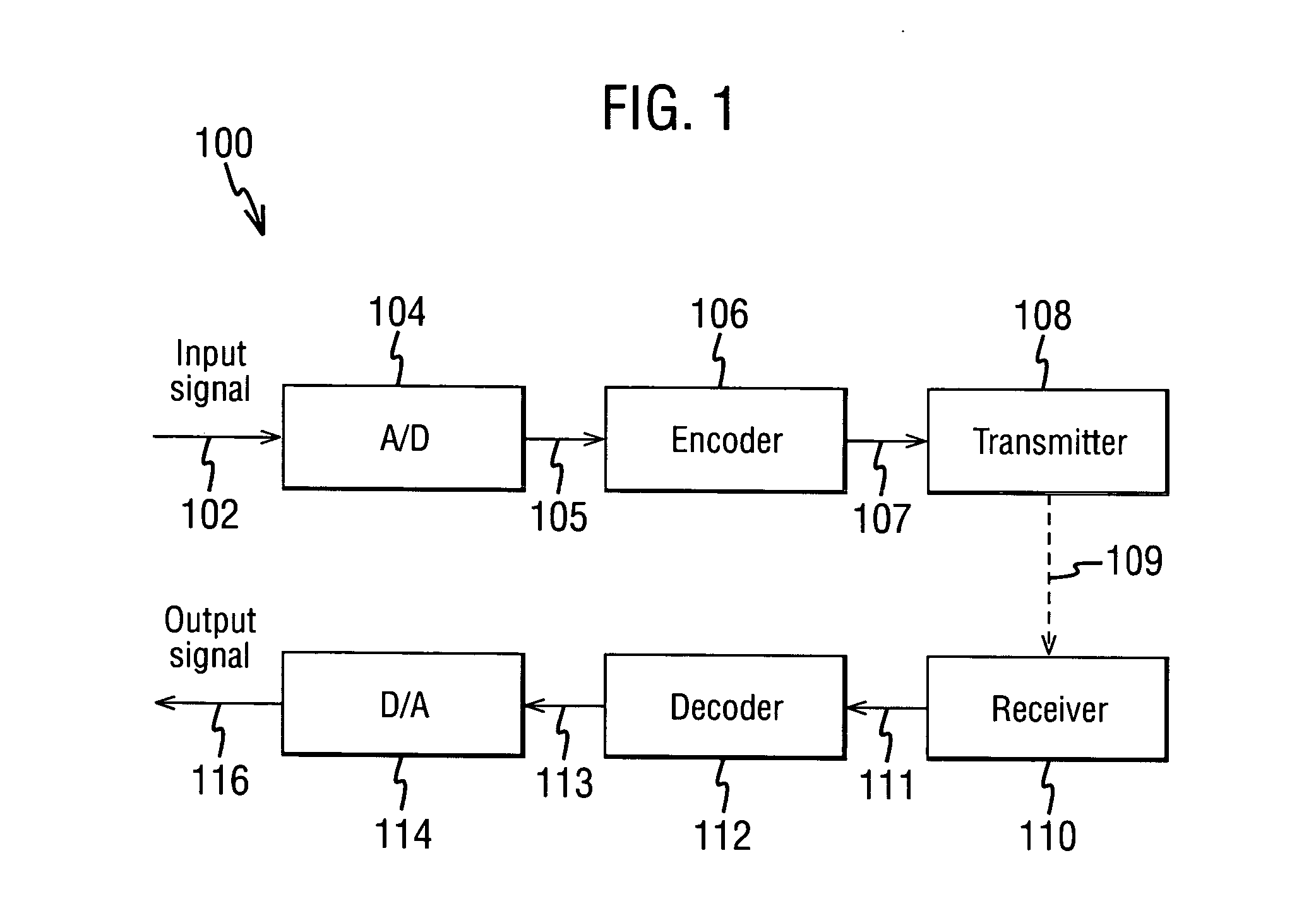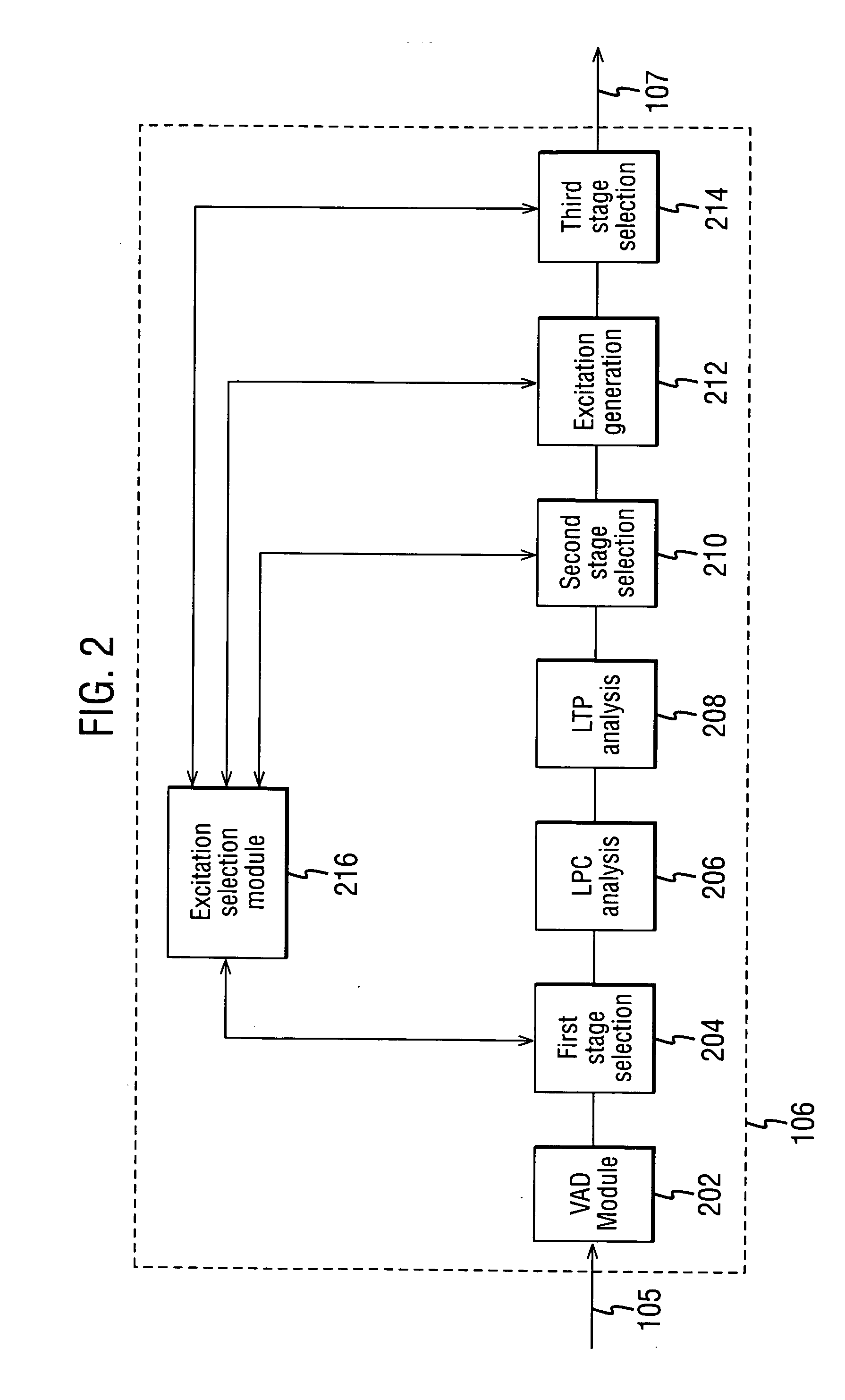Signal encoding
a signal and encoder technology, applied in the field of signal encoders, can solve the problems of lossy or lossless compression or encoding, limited radio channel capacity over the wireless air interface, information loss,
- Summary
- Abstract
- Description
- Claims
- Application Information
AI Technical Summary
Benefits of technology
Problems solved by technology
Method used
Image
Examples
Embodiment Construction
[0037] The present invention is described herein with reference to particular examples. The invention is not, however, limited to such examples.
[0038]FIG. 1 illustrates a communications system 100 that supports signal processing using the AMR-WB+ codec according to one embodiment of the invention.
[0039] The system 100 comprises various elements including an analogue to digital (A / D) converter 104, and encoder 106, a transmitter 108, a receiver 110, a decoder 112 and a digital to analogue (D / A) converter 114. The A / D converter 104, encoder 106 and transmitter 108 may form part of a mobile terminal. The receiver 110, decoder 112 and D / A converter 114 may form part of a base station.
[0040] The system 100 also comprises one or more audio sources, such as a microphone not shown in FIG. 1, producing an audio signal 102 comprising speech and / or non-speech signals. The analogue signal 102 is received at the A / D converter 104, which converts the analogue signal 102 into a digital signal 1...
PUM
 Login to View More
Login to View More Abstract
Description
Claims
Application Information
 Login to View More
Login to View More - R&D
- Intellectual Property
- Life Sciences
- Materials
- Tech Scout
- Unparalleled Data Quality
- Higher Quality Content
- 60% Fewer Hallucinations
Browse by: Latest US Patents, China's latest patents, Technical Efficacy Thesaurus, Application Domain, Technology Topic, Popular Technical Reports.
© 2025 PatSnap. All rights reserved.Legal|Privacy policy|Modern Slavery Act Transparency Statement|Sitemap|About US| Contact US: help@patsnap.com



